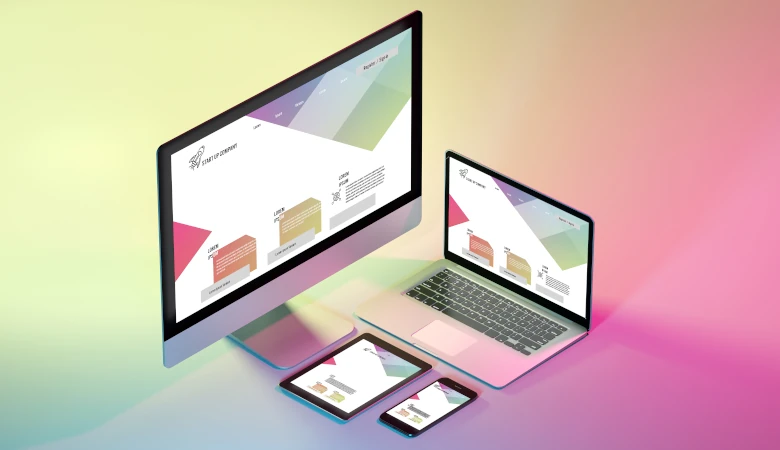In the rapidly evolving digital world, user experience is more important than ever. As mobile devices like smartphones and tablets continue to dominate the internet landscape, responsive web design has become a cornerstone of modern web development. Responsive design is a design approach that allows websites to adapt and provide an optimal viewing experience across a wide range of devices, from desktop computers to mobile phones.
Among the different approaches to responsive design, mobile-first design has emerged as the gold standard in 2024. This approach focuses on designing the mobile version of a website first, ensuring that it functions seamlessly on smaller screens before scaling up to accommodate larger ones like desktops and laptops. This blog will explore the rise of mobile devices, the benefits of mobile-first design, key considerations for implementing it, and why it is a crucial aspect of modern web development.
Table of Content
The Rise of Mobile Devices
The way people access the internet has undergone a significant shift over the past decade. Mobile devices now account for over 60% of global web traffic, and this number is only expected to grow as smartphones become more affordable and internet connectivity becomes more widespread. In many regions, mobile users have far surpassed desktop users in terms of time spent online.
For businesses, this means that failing to prioritize mobile users in their web design can lead to a poor user experience, lower search engine rankings, and, ultimately, missed opportunities for conversions and sales. This is where the mobile-first design approach becomes critical—by starting with the most challenging screen size (mobile), developers can ensure that the user experience is optimized for the majority of internet users.
Benefits of Mobile-First Web Design
1. Improved User Experience

Mobile-first design focuses on streamlining the user experience for mobile devices, which often have smaller screens and less processing power. By prioritizing content and functionality for mobile users, businesses can offer a cleaner, more intuitive interface that helps users find what they’re looking for quickly and efficiently.
For example, essential features such as easy navigation, clear calls to action, and fast access to important information become the focal point of the design. This reduced clutter enhances the user experience, minimizes distractions, and leads to higher engagement rates.
2. Better SEO Performance
In recent years, search engines like Google have placed a strong emphasis on mobile-friendliness as a critical ranking factor. With the introduction of mobile-first indexing, Google now predominantly uses the mobile version of a website for ranking and indexing. This means that if your website is not optimized for mobile, you could be missing out on significant search visibility.
A mobile-first design approach ensures that your website is fully optimized for mobile devices from the start, increasing your chances of ranking higher on search engine results pages (SERPs) and driving more organic traffic to your site.
3. Faster Loading Times
Speed is a critical factor in user retention. According to research, 53% of mobile users abandon a website if it takes longer than 3 seconds to load. Mobile-first design helps optimize the site’s performance by focusing on elements that enhance speed, such as:
- Minimized code: Reducing unnecessary scripts and styles to streamline load times.
- Optimized images: Using responsive images that load based on the screen size and resolution.
- Efficient caching: Ensuring elements of the site are cached correctly for returning users.
A faster website not only improves user satisfaction but also contributes to better SEO rankings, as Google considers page speed a ranking factor.
4. Cost-Effective Development
One of the misconceptions about mobile-first design is that it increases development costs. In reality, adopting a mobile-first approach can save both time and money in the long run. By designing the mobile version of your website first, you are working with a simpler framework and fewer elements, which reduces initial complexity.
From there, you can progressively enhance the design for larger screens like tablets and desktops. This method prevents the need for costly redesigns or additional development work later, as all key features and functionality are built from a mobile-friendly foundation.
Key Considerations for Mobile-First Design

1. Prioritize Content
When it comes to mobile-first design, content prioritization is key. Smaller screens mean you have less real estate to work with, so it’s crucial to focus on the most important content and features. Start by identifying what users are most likely to look for on your site and ensure that information is easily accessible.
For instance, if your site sells products, you should highlight product descriptions, images, and the checkout button at the forefront, while less important content can be moved to secondary pages or hidden behind expandable menus.
2. Optimize Images
Images often account for a significant portion of a website’s loading time, especially on mobile devices with slower connections. By using modern techniques like image compression and responsive images, you can drastically reduce file sizes without compromising quality.
Responsive images ensure that the correct image size is served to users based on their screen size, preventing unnecessarily large images from slowing down load times.
3. Use Responsive Frameworks
Building a website from scratch can be time-consuming, but leveraging responsive frameworks like Bootstrap or Foundation can help speed up the development process. These frameworks come with pre-built responsive components that adjust automatically to different screen sizes, ensuring that your design remains consistent across devices.
Additionally, frameworks help maintain cross-browser compatibility, ensuring that your website looks great and functions well, whether viewed on Chrome, Safari, or Firefox.
4. Test Across Devices
Finally, one of the most important steps in mobile-first design is thorough testing. You need to test your website across a wide variety of devices and screen sizes to ensure compatibility. This includes everything from small smartphones to larger tablets, as well as varying screen resolutions.
Tools like Google’s Mobile-Friendly Test and browser developer tools can help identify issues with layout, responsiveness, or load times across devices, allowing you to make necessary adjustments.
Embracing Mobile-First Design for a Future-Ready Website
In 2024, mobile-first design is no longer an option but a necessity for businesses aiming to thrive in the competitive digital landscape. By prioritizing mobile devices, you can create websites that deliver a seamless user experience, improve SEO performance, enhance loading times, and drive higher conversions.
As mobile usage continues to dominate, adopting a mobile-first strategy is crucial for staying relevant and accessible to your audience. It’s about more than just functionality—it’s about building trust, ensuring convenience, and establishing your brand’s online presence effectively.
If you’re ready to take the leap into mobile-first design, connect with Tech Thulasii, a trusted web development company based in Chennai. With their expertise, they can help you craft a responsive, engaging website tailored to meet the needs of today’s mobile-savvy audience.


